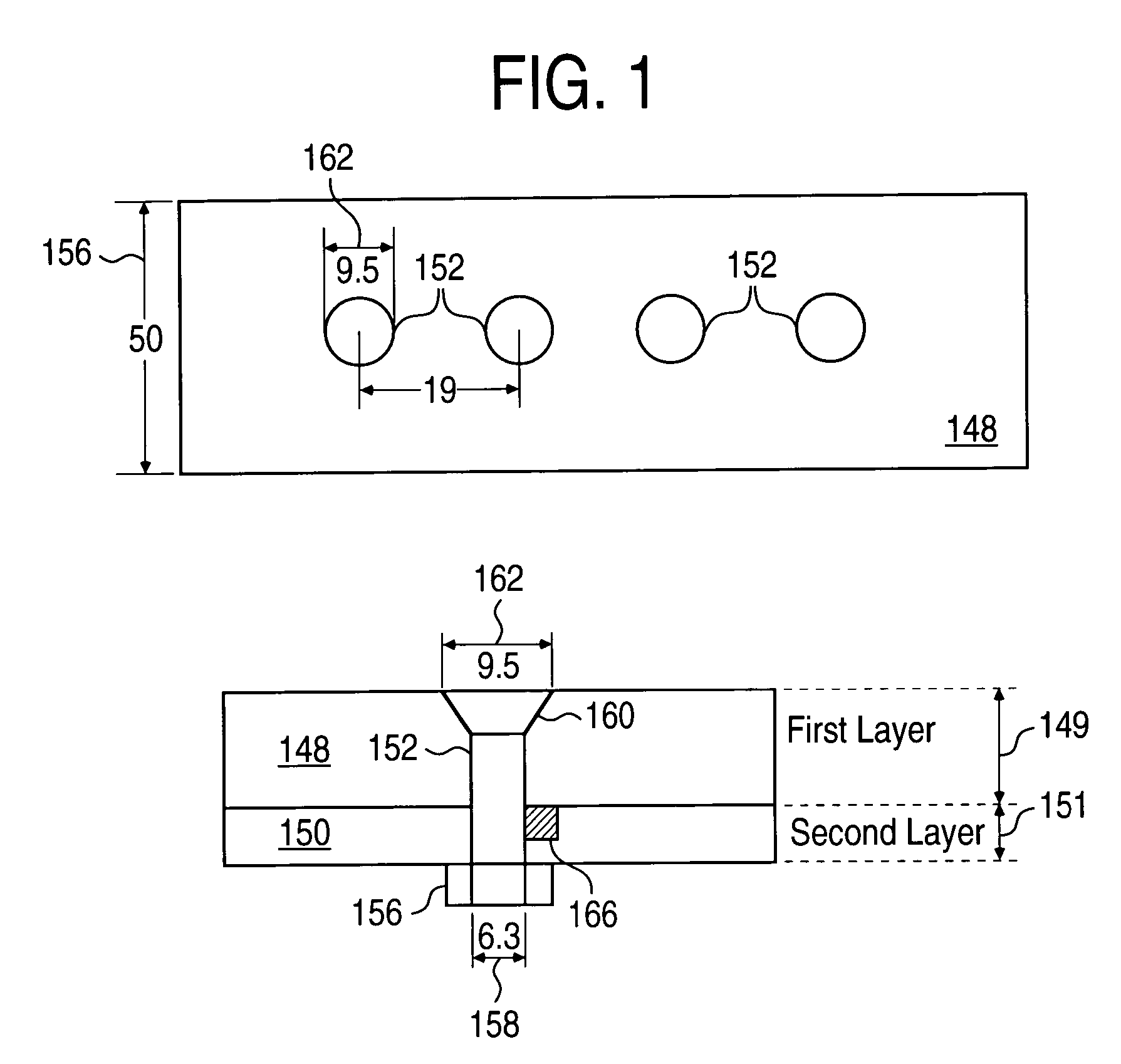Probes and methods for detecting defects in metallic structures
a technology of metallic structures and defects, applied in the direction of instruments, magnetic properties, material magnetic variables, etc., can solve the problems of major structural failure, cracks around fastener holes in each of the structure layers, and ineffective detection of lower-layer flaws, etc., to achieve significant reduction of inspection time
- Summary
- Abstract
- Description
- Claims
- Application Information
AI Technical Summary
Benefits of technology
Problems solved by technology
Method used
Image
Examples
examples
[0081] Studies were conducted using embodiments of the present invention to detect buried cracks in test specimens. The test specimens were configured to simulate transverse defects or cracks, as these are the most frequently encountered defects. As is illustrated in FIG. 14, two specimen metal plates were used. Both specimen metal plates were constructed from stacks of aluminum plates where each aluminum plate has a thickness of about 3.2 mm (0.125 in.). Overall, each specimen metal plate has a width 94 of about 50 mm (2 in.) and a length 96 of about 280 mm (11 in.).
[0082] Both plates contained a plurality of fastener holes 79 arranged in rows. Ten holes 79, each having a diameter of about 6.3 mm (0.25 in.) were drilled in each plate in rows aligned with the longitudinal symmetry axis 98 of each plate. The distance between the centers of adjacent holes was 19 mm (0.75 in.).
[0083] Various holes were provided with transverse cracks emanating from their edges. The length of these cr...
PUM
 Login to View More
Login to View More Abstract
Description
Claims
Application Information
 Login to View More
Login to View More - R&D
- Intellectual Property
- Life Sciences
- Materials
- Tech Scout
- Unparalleled Data Quality
- Higher Quality Content
- 60% Fewer Hallucinations
Browse by: Latest US Patents, China's latest patents, Technical Efficacy Thesaurus, Application Domain, Technology Topic, Popular Technical Reports.
© 2025 PatSnap. All rights reserved.Legal|Privacy policy|Modern Slavery Act Transparency Statement|Sitemap|About US| Contact US: help@patsnap.com



